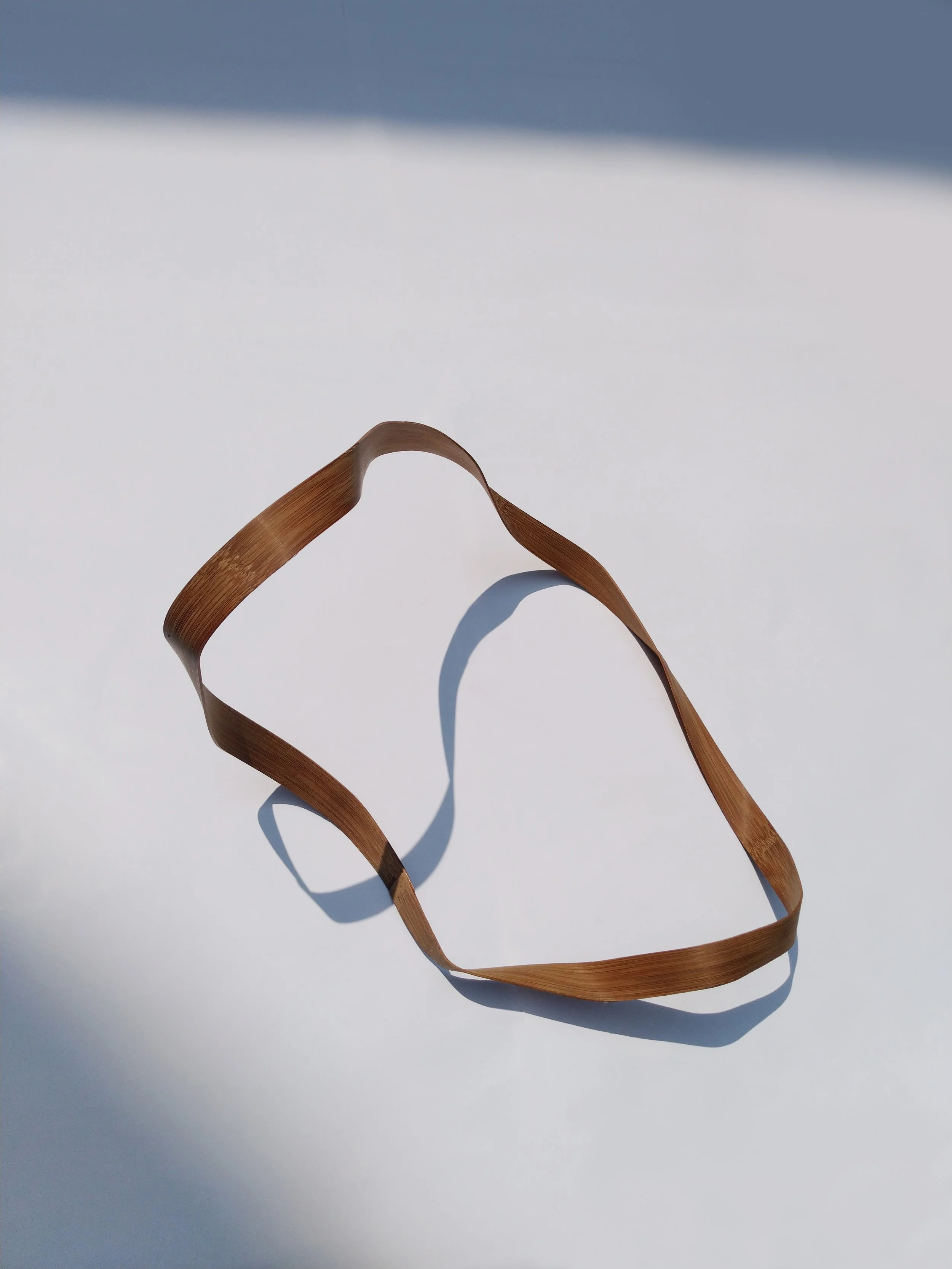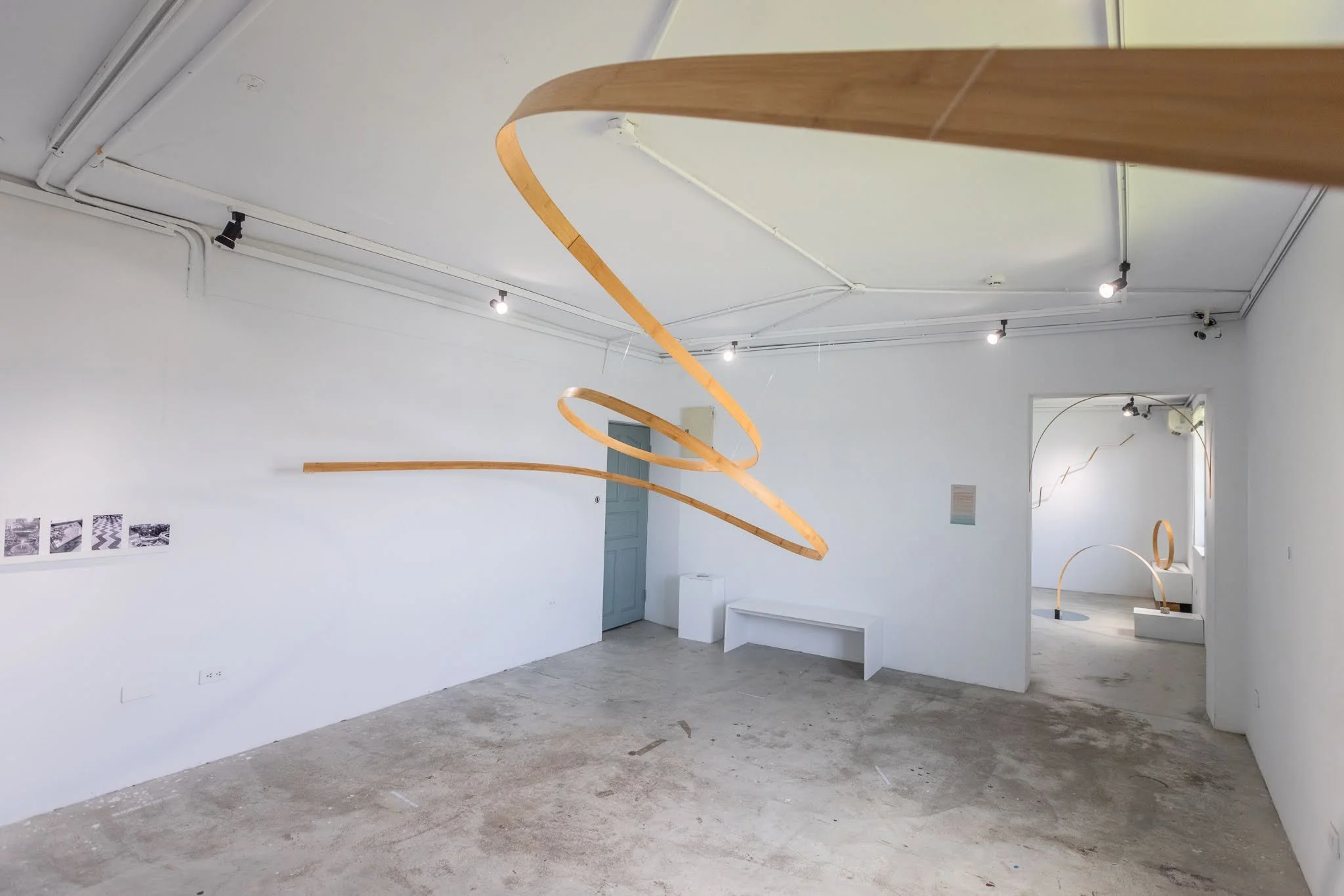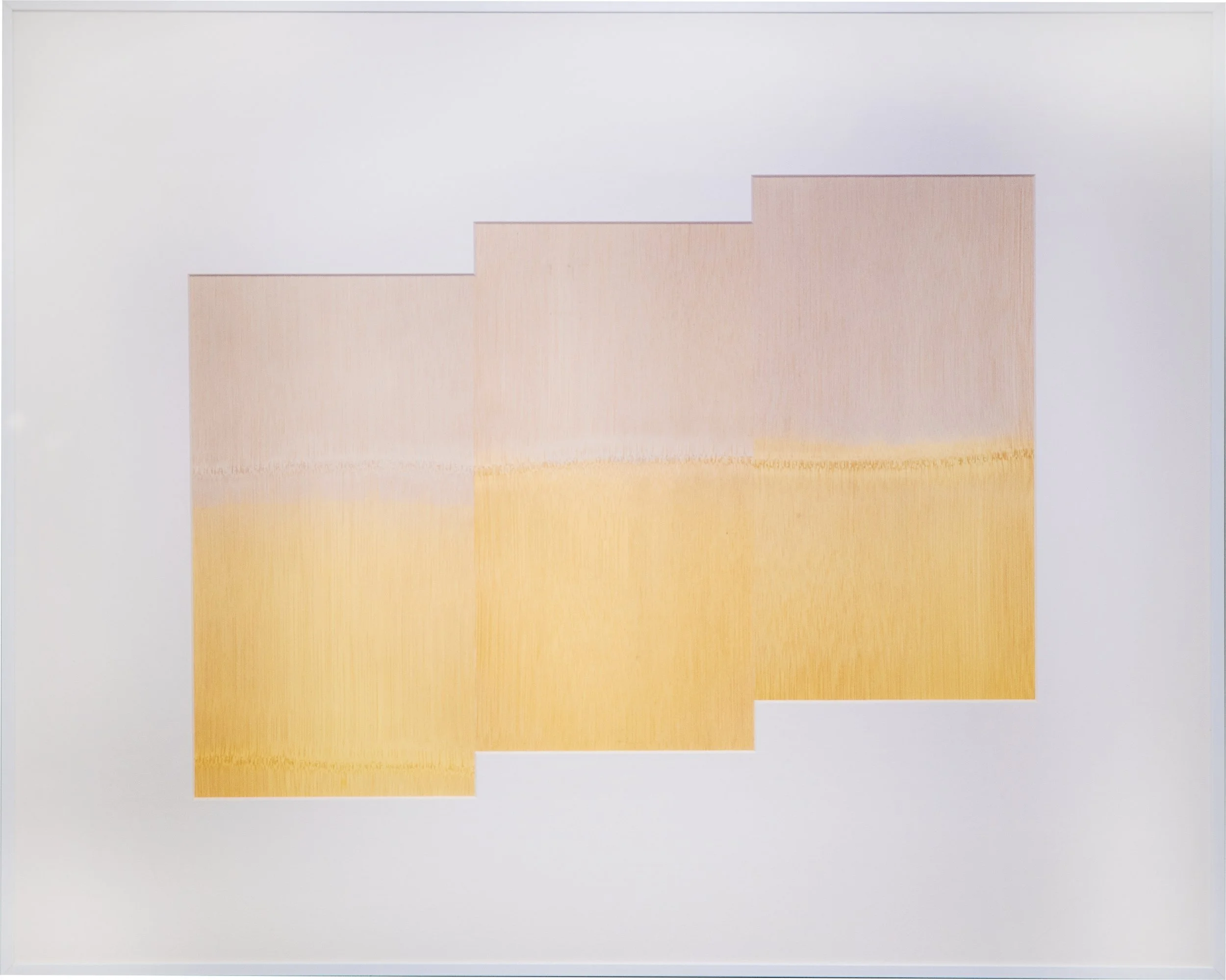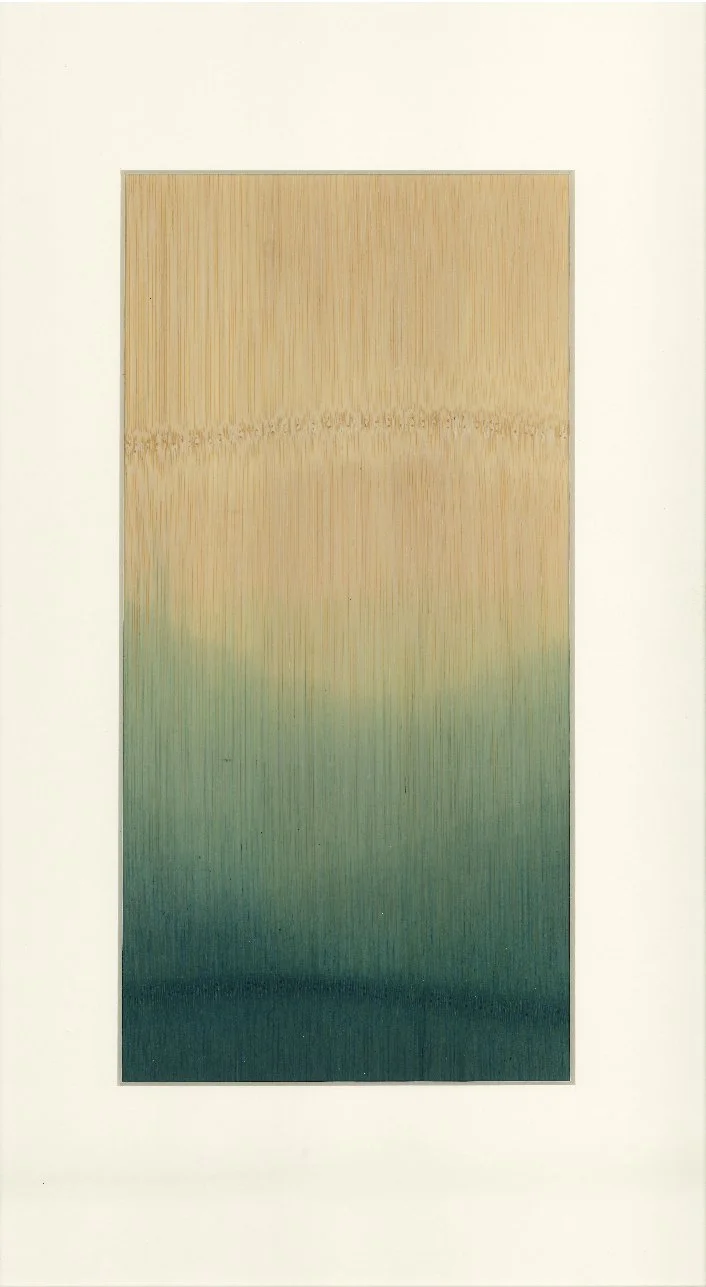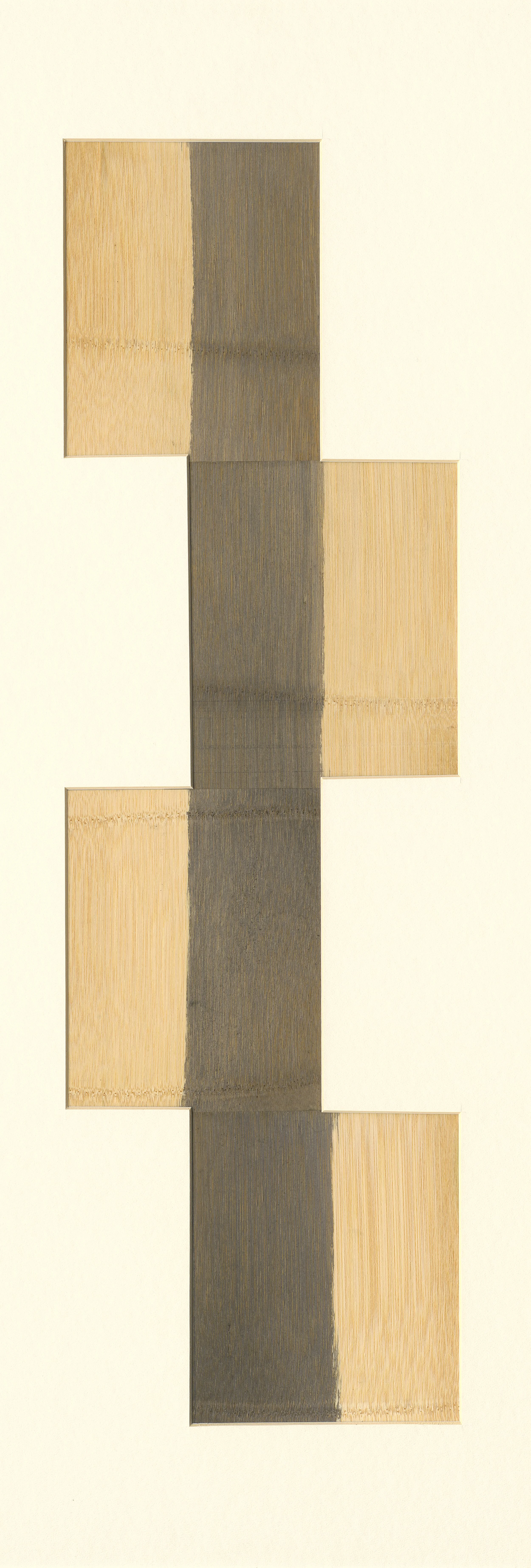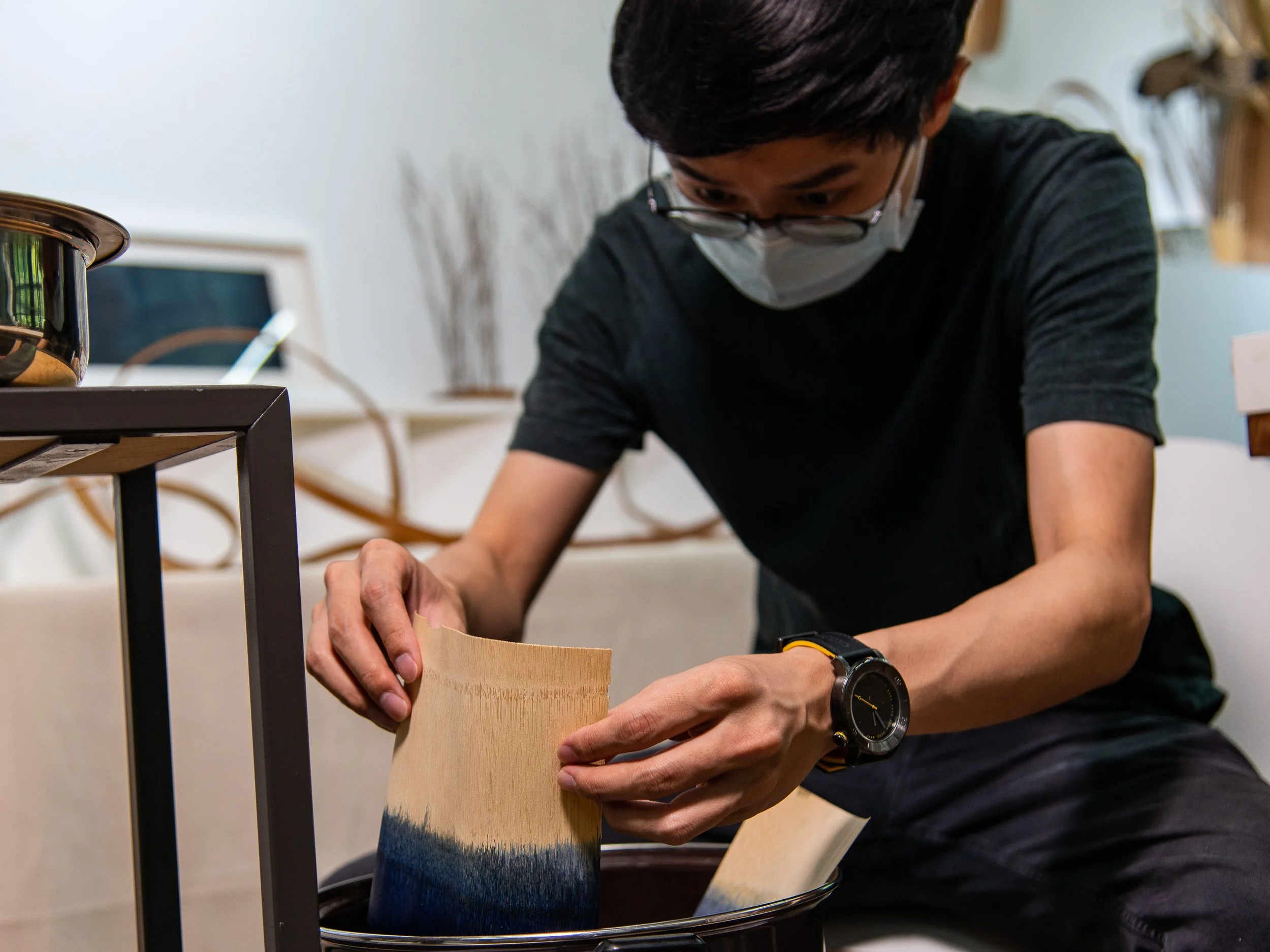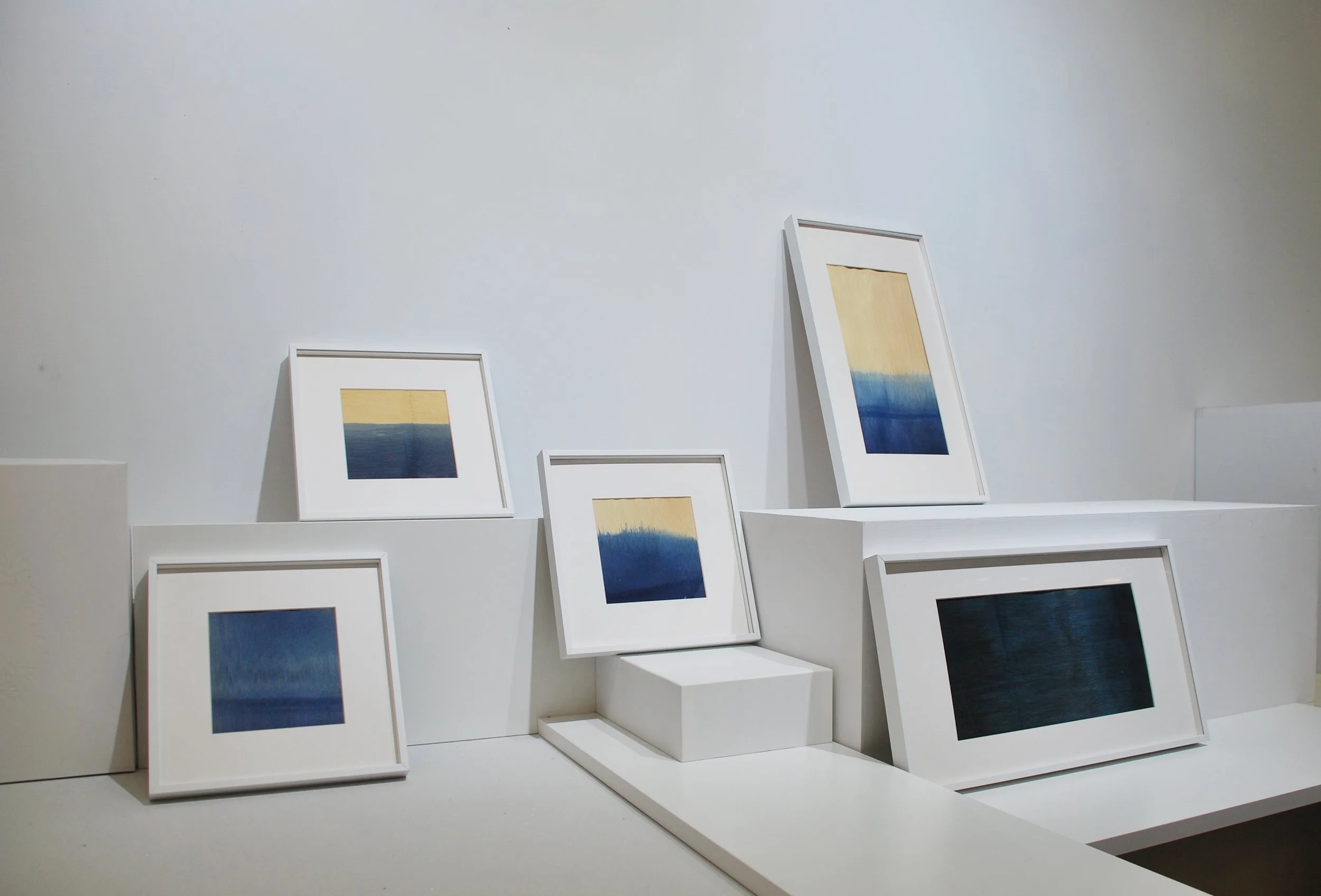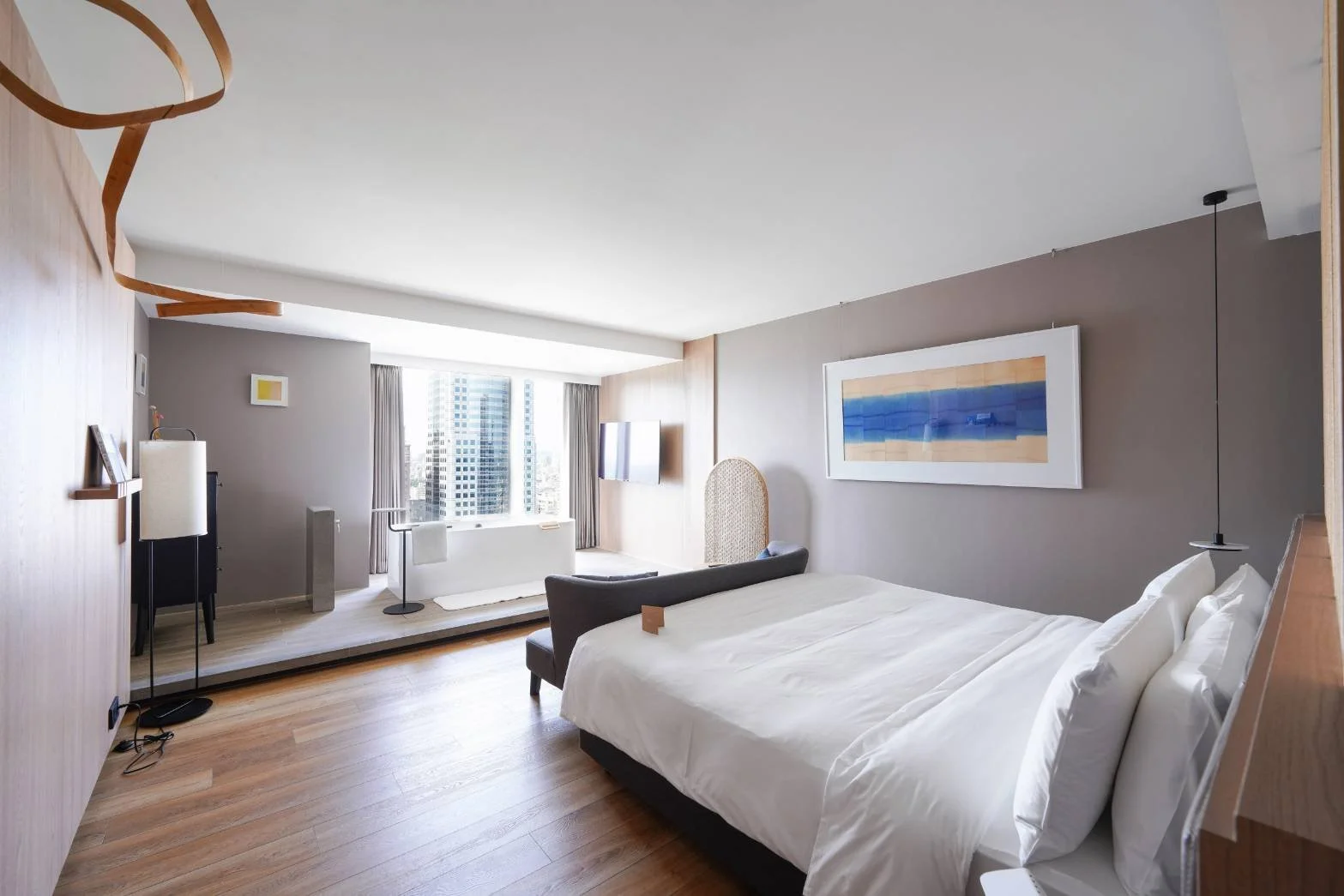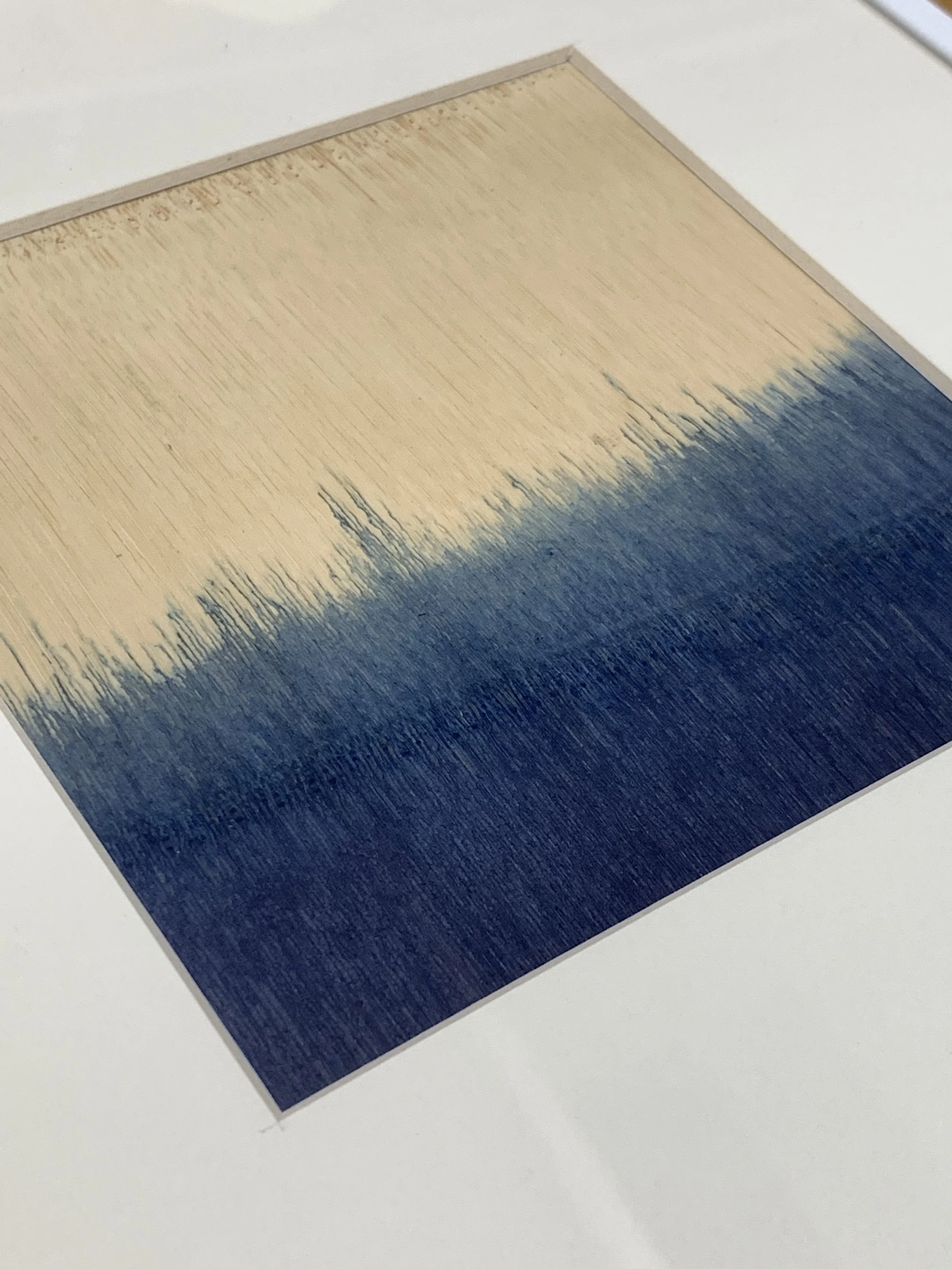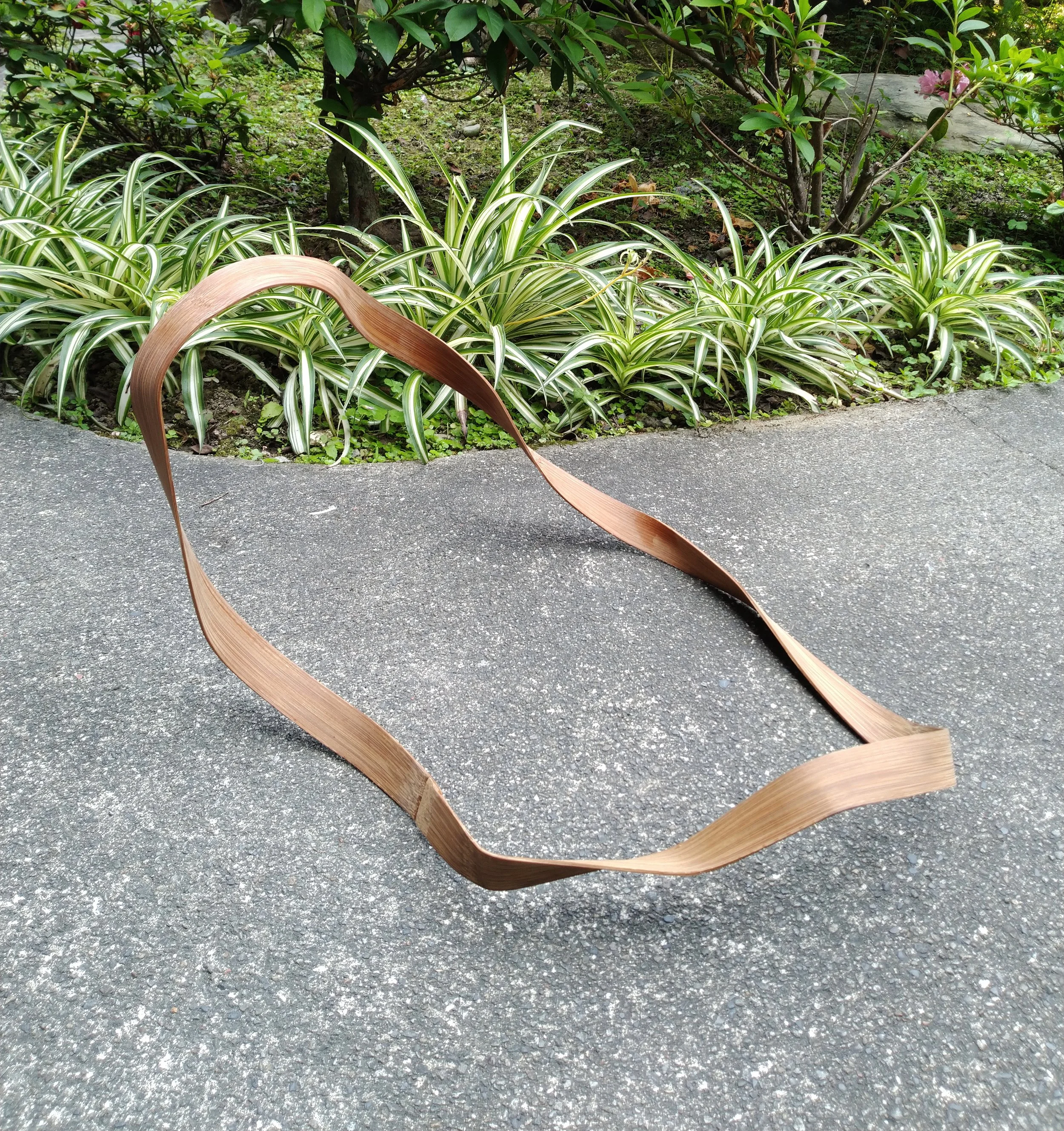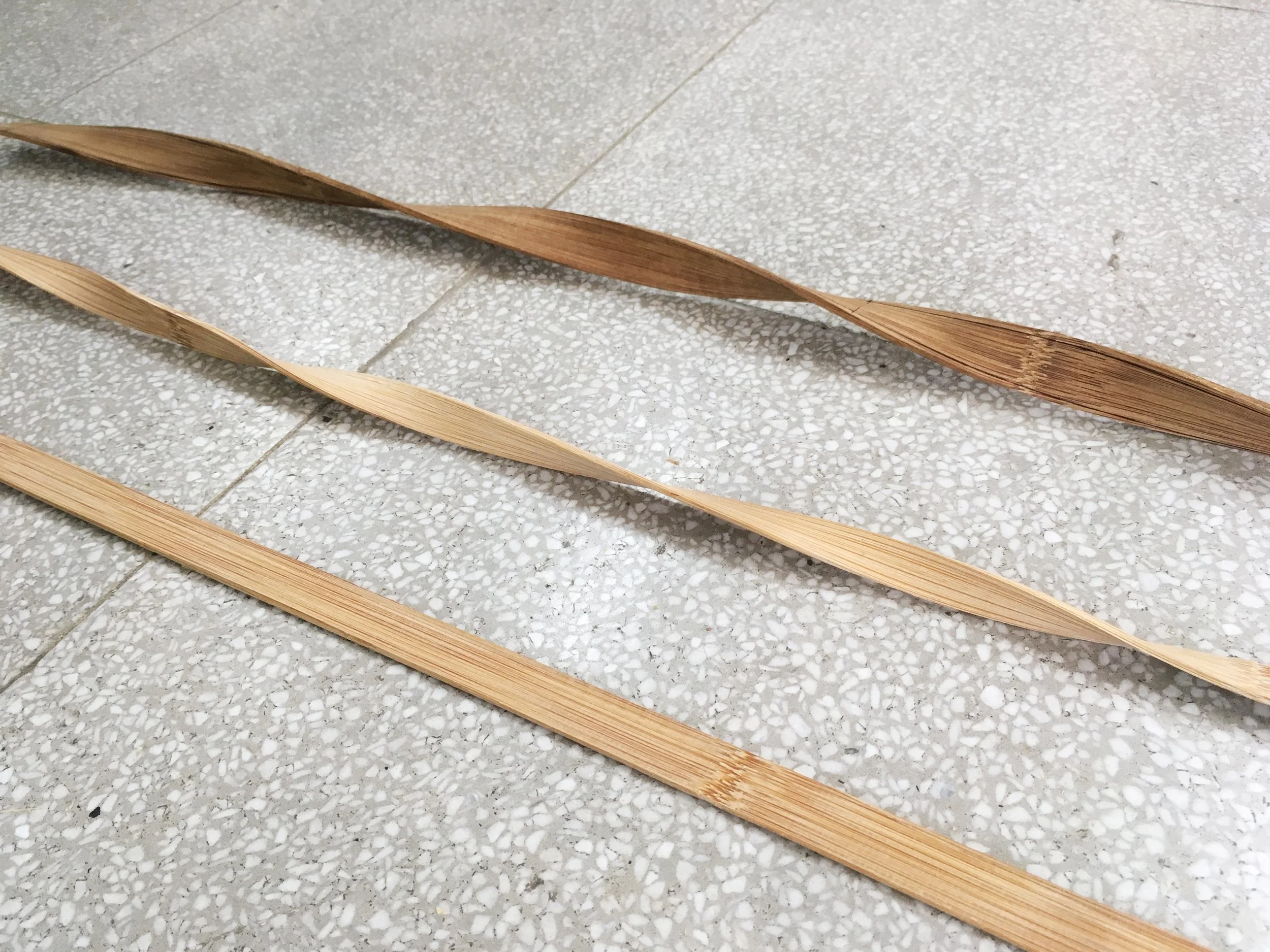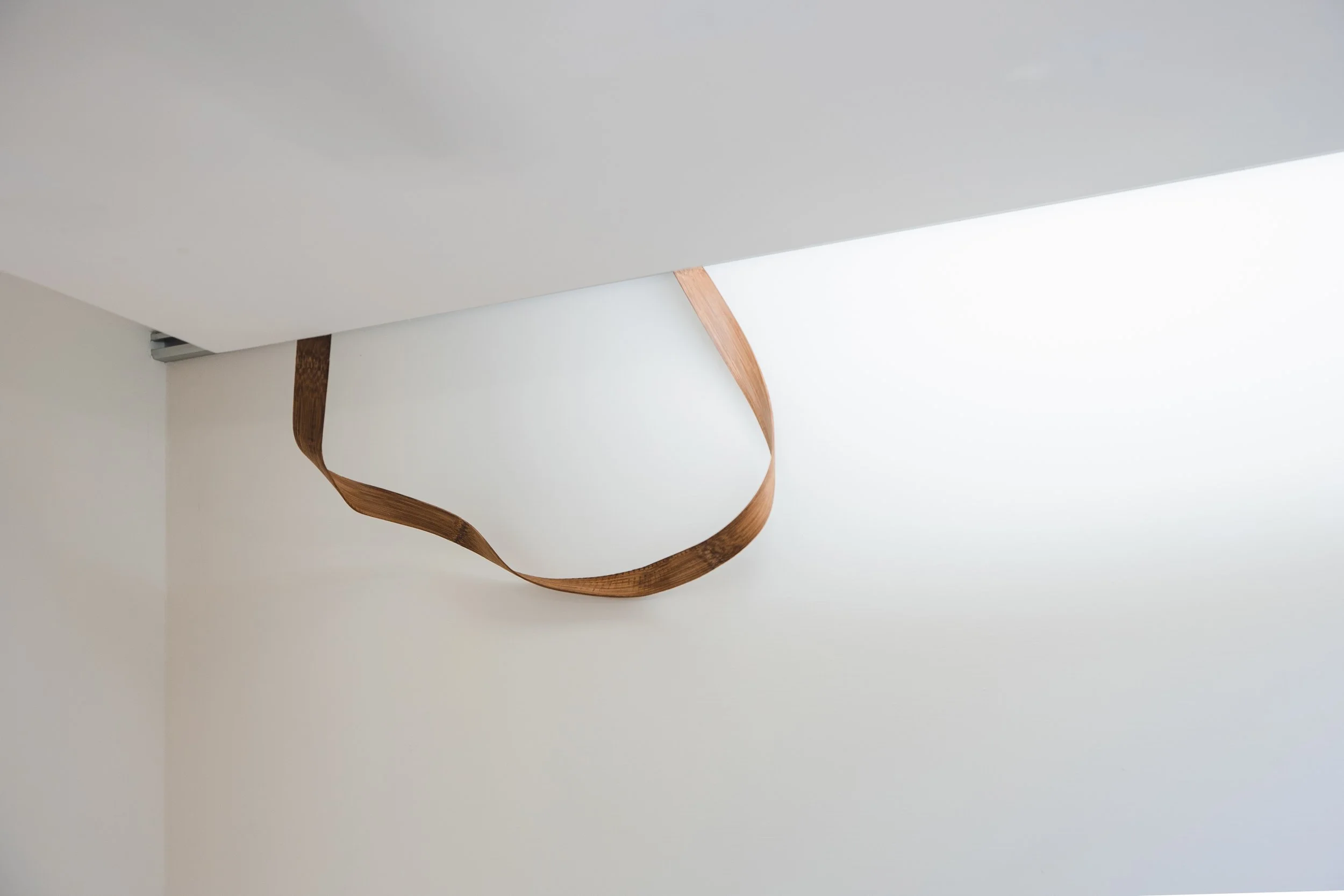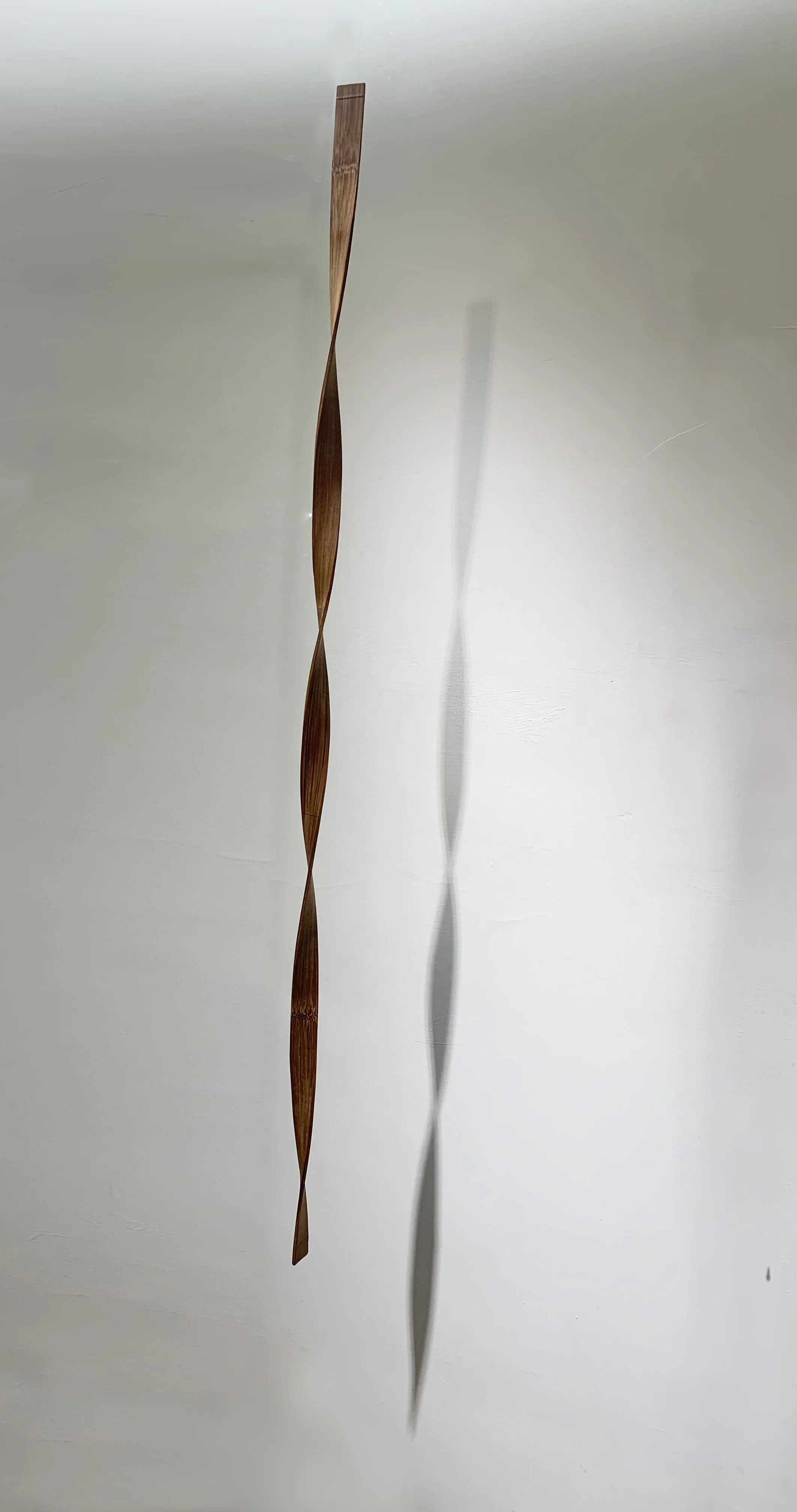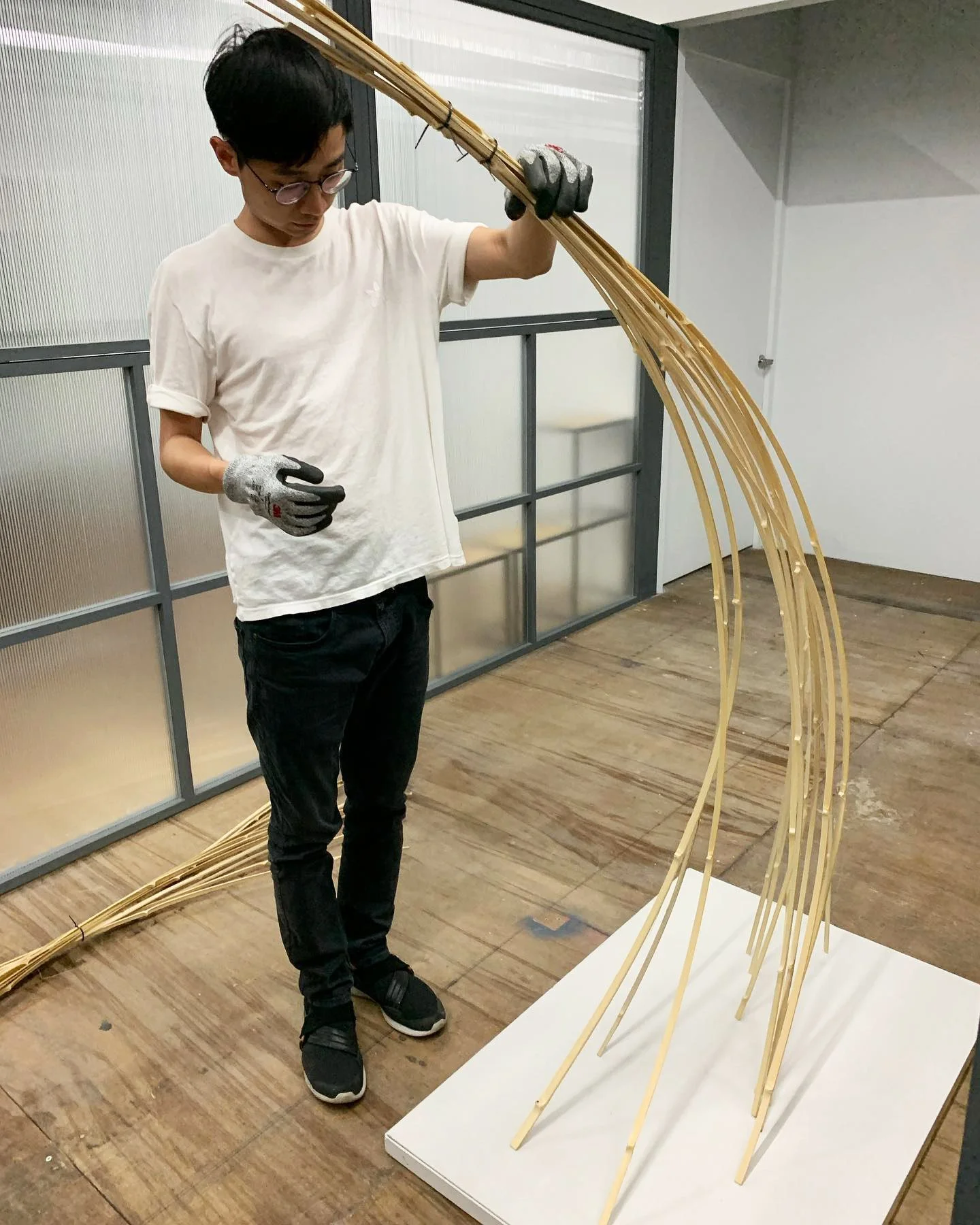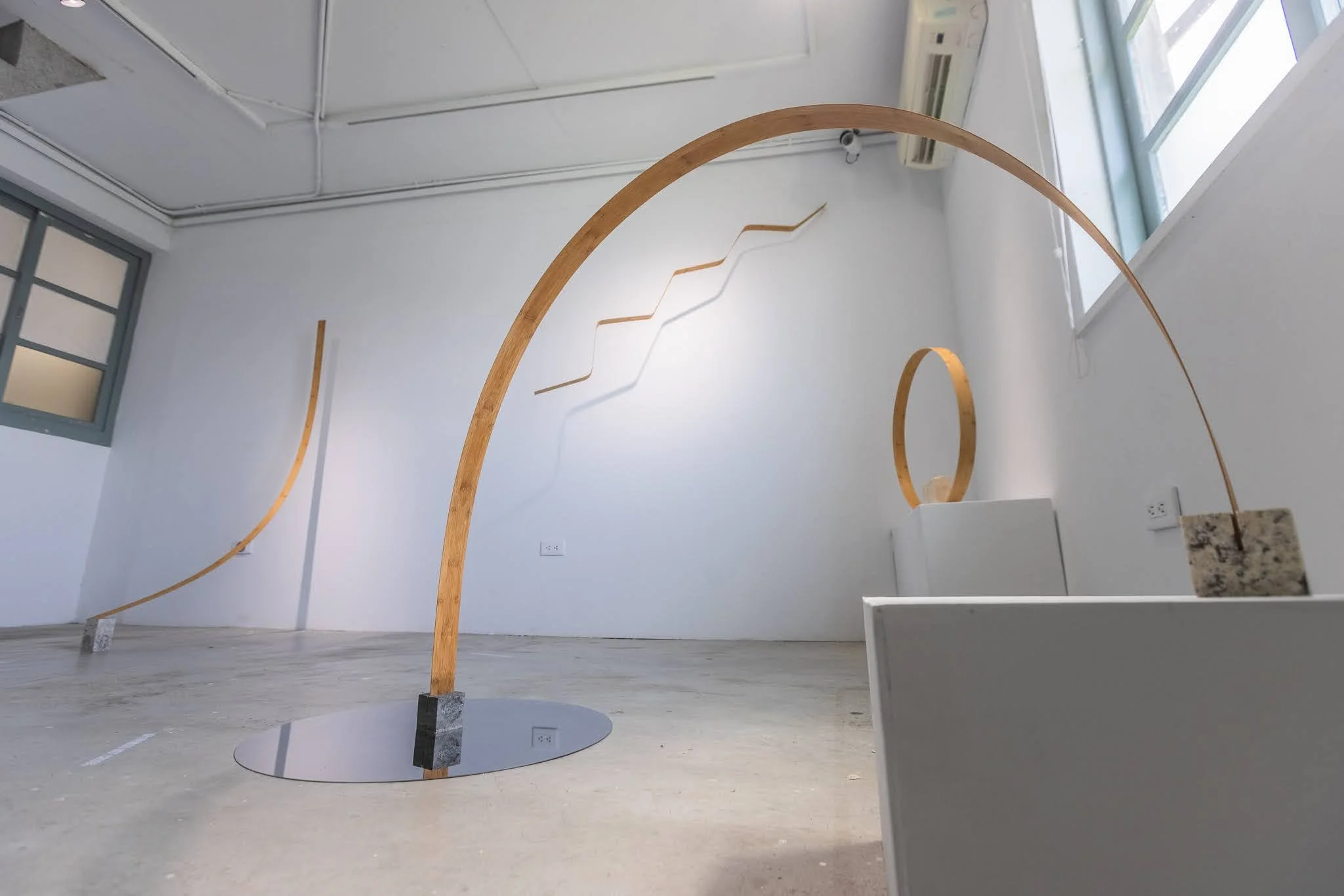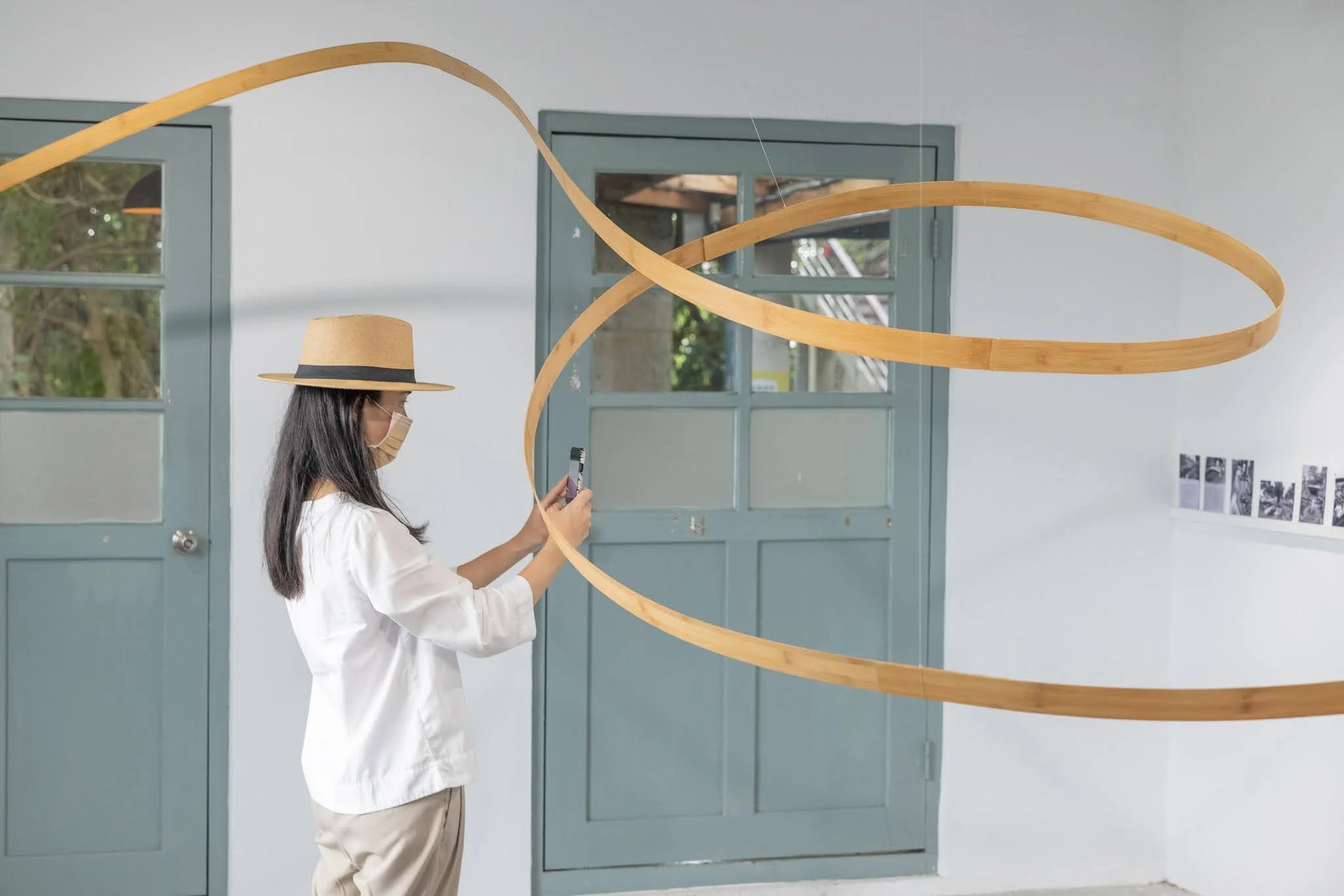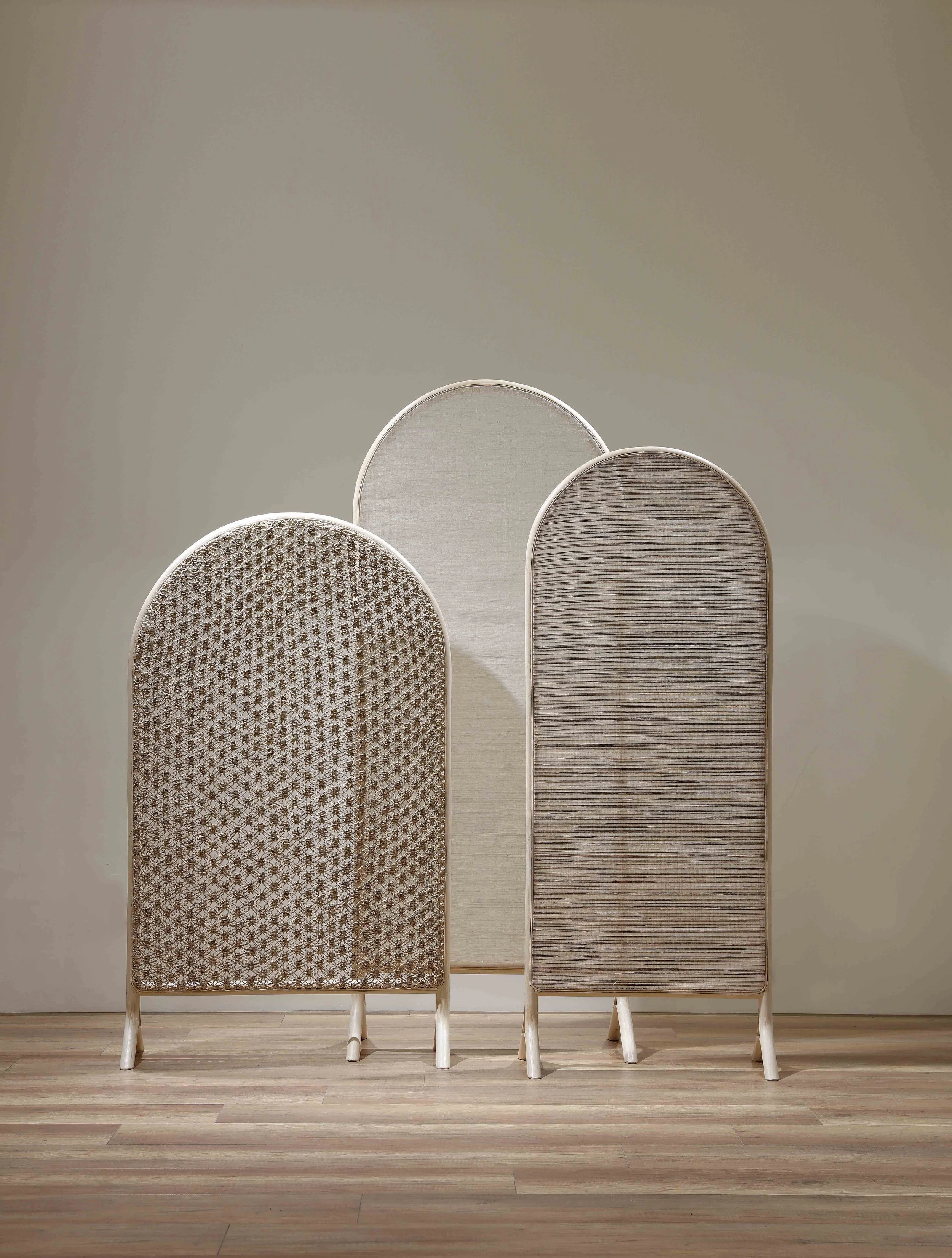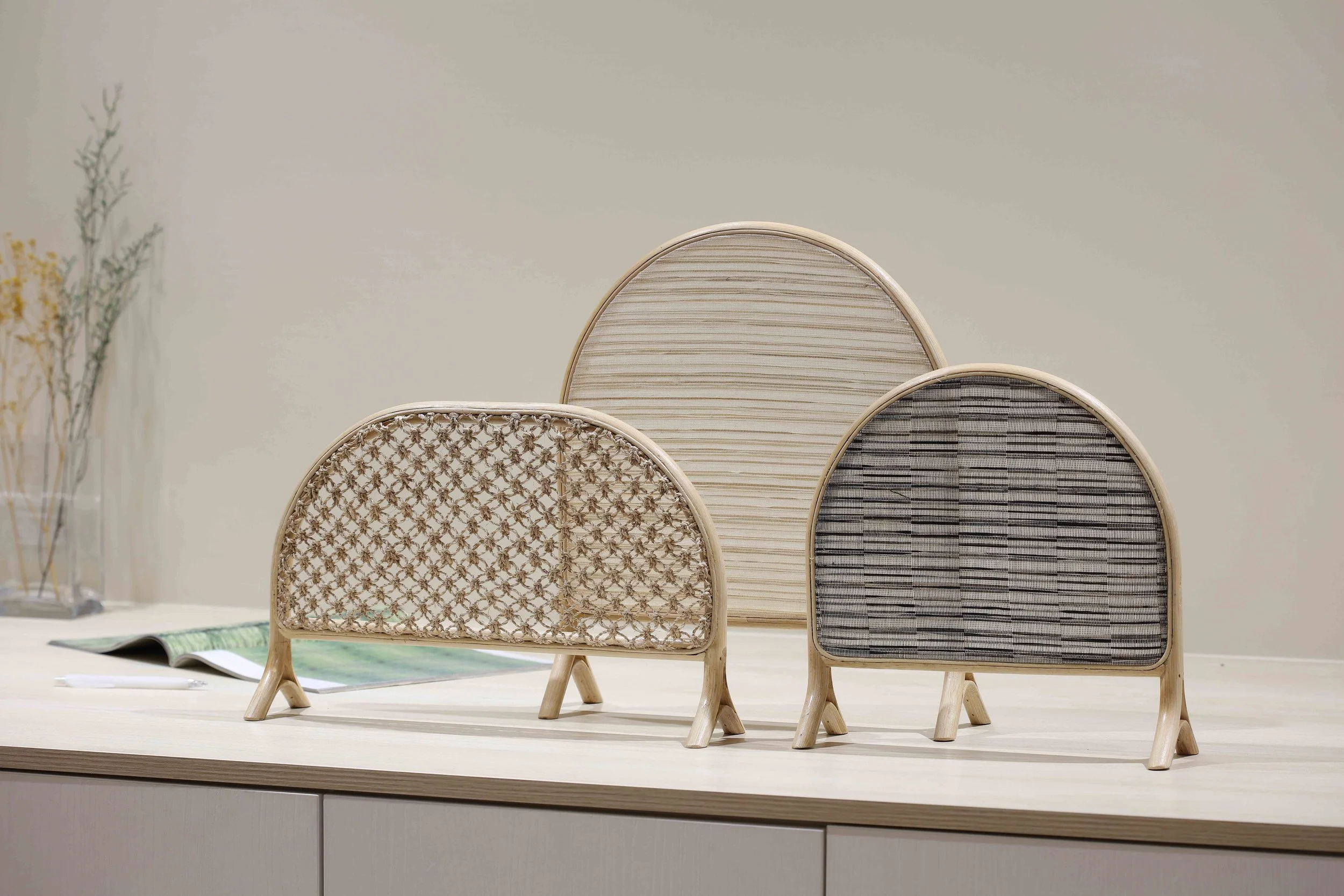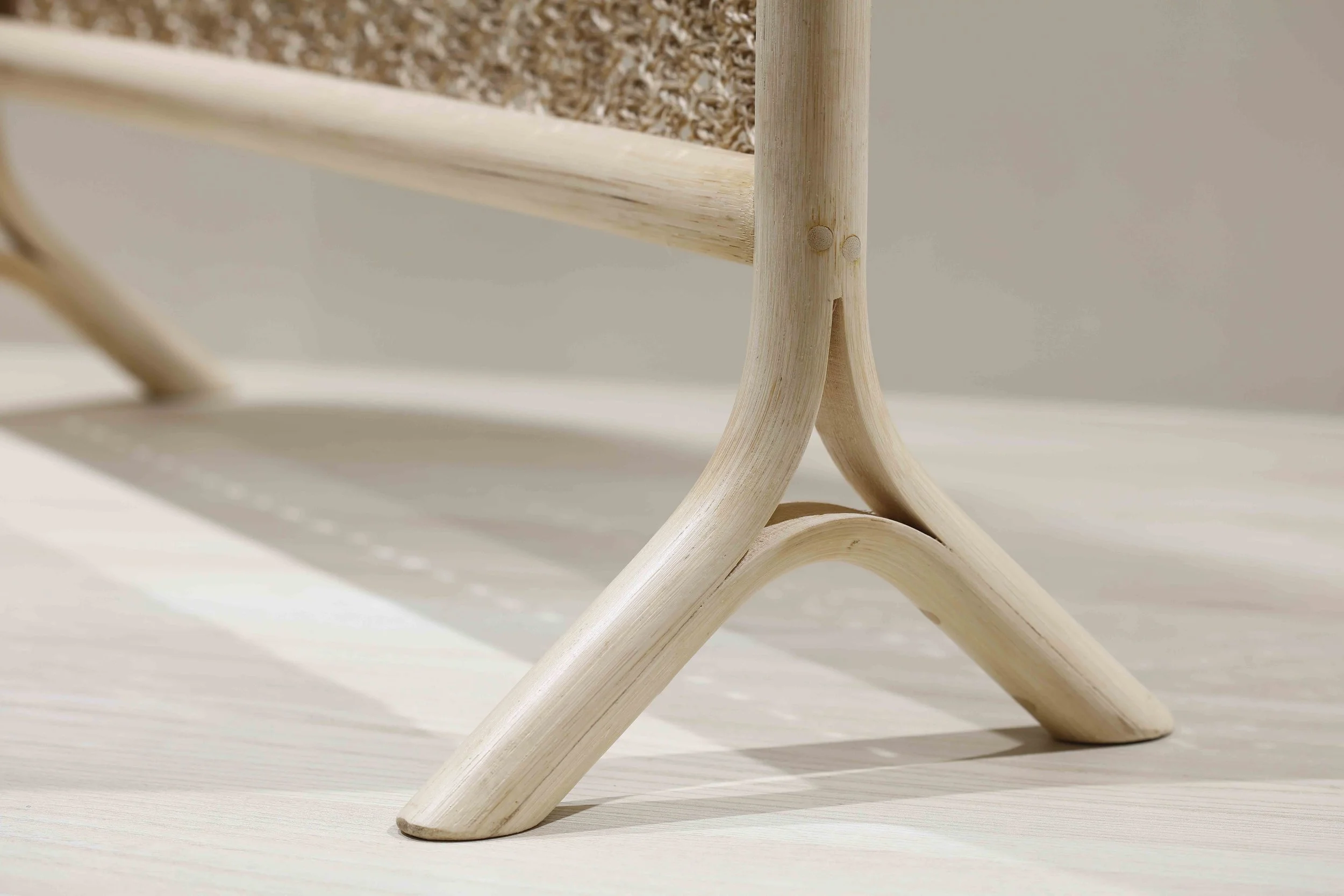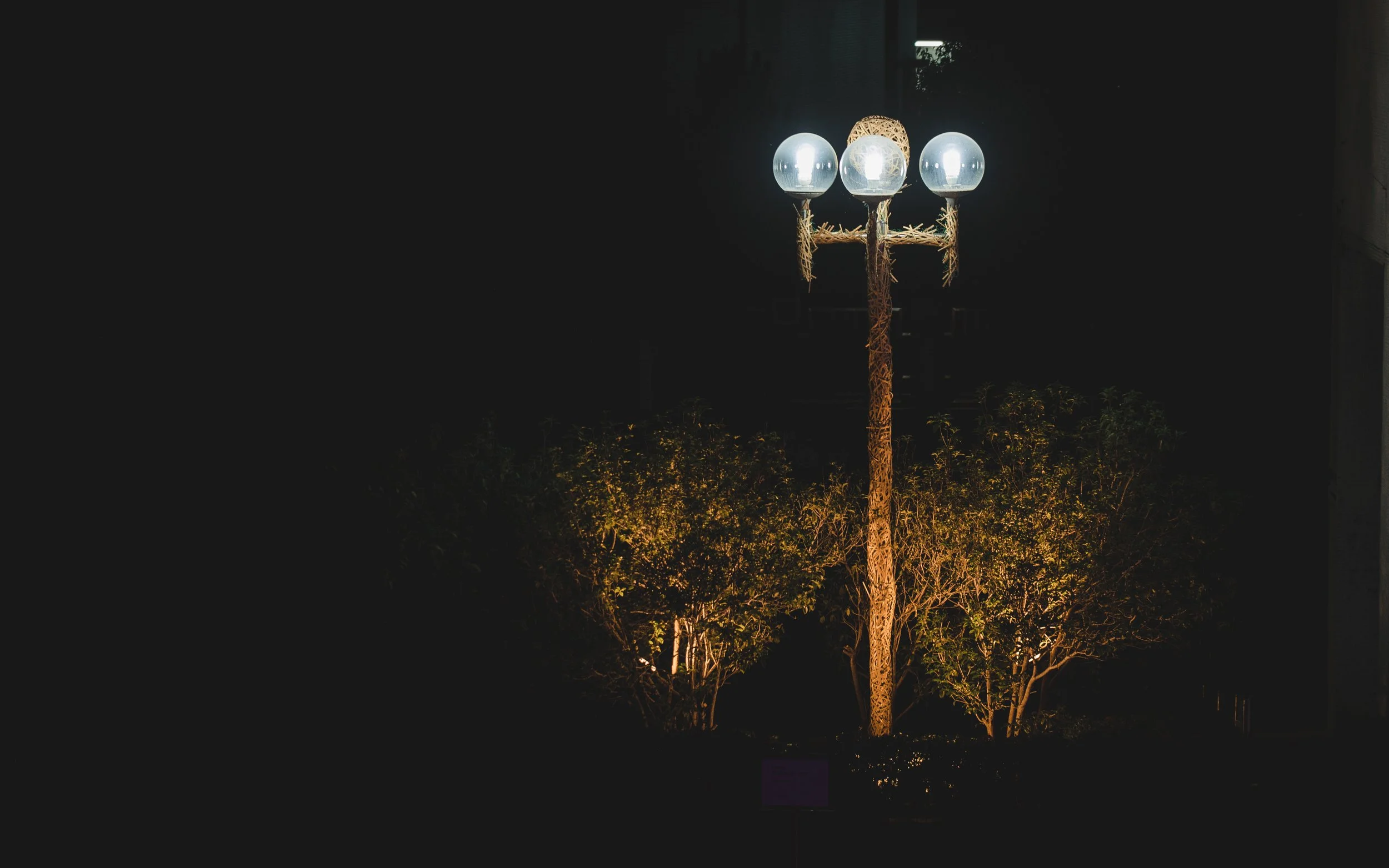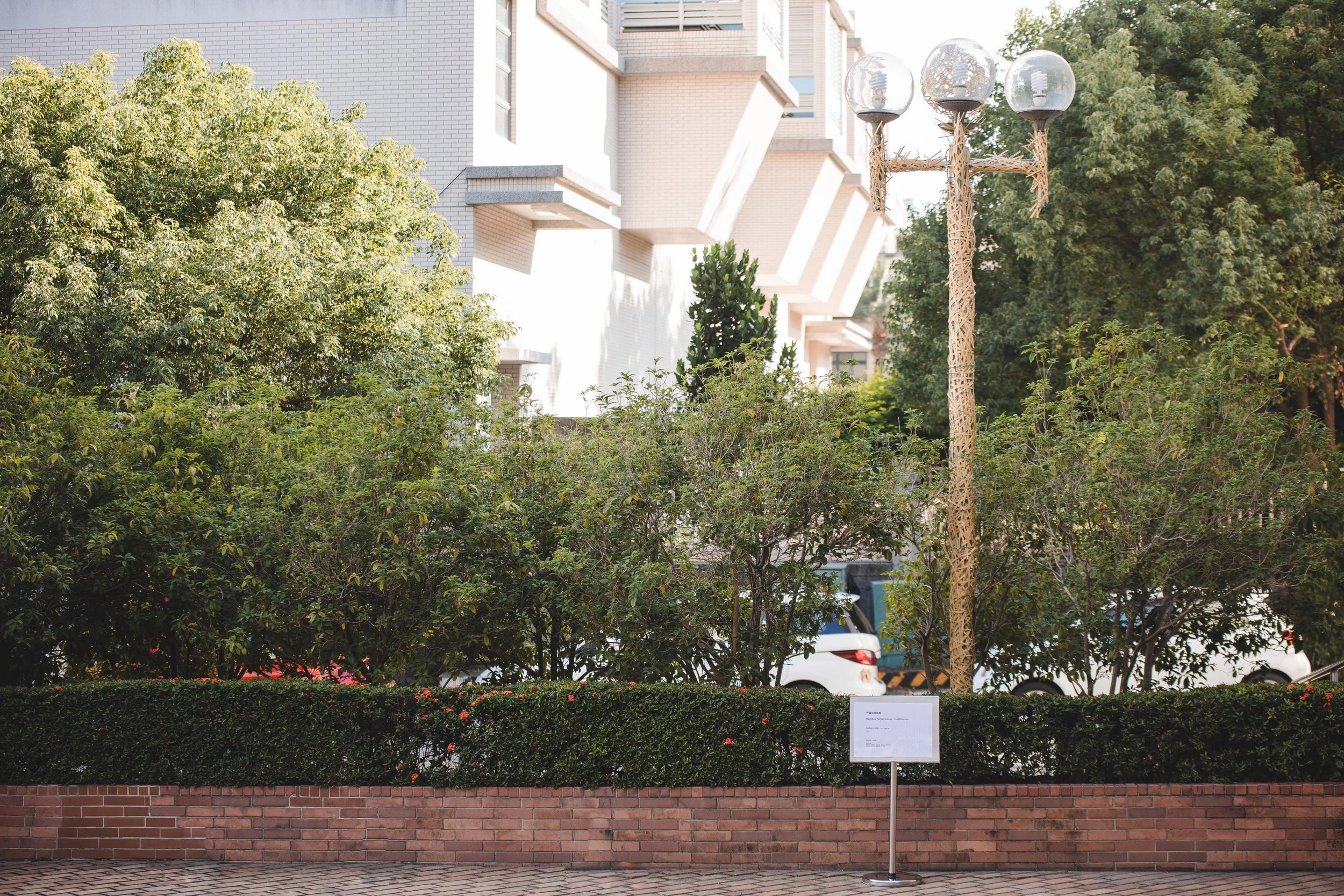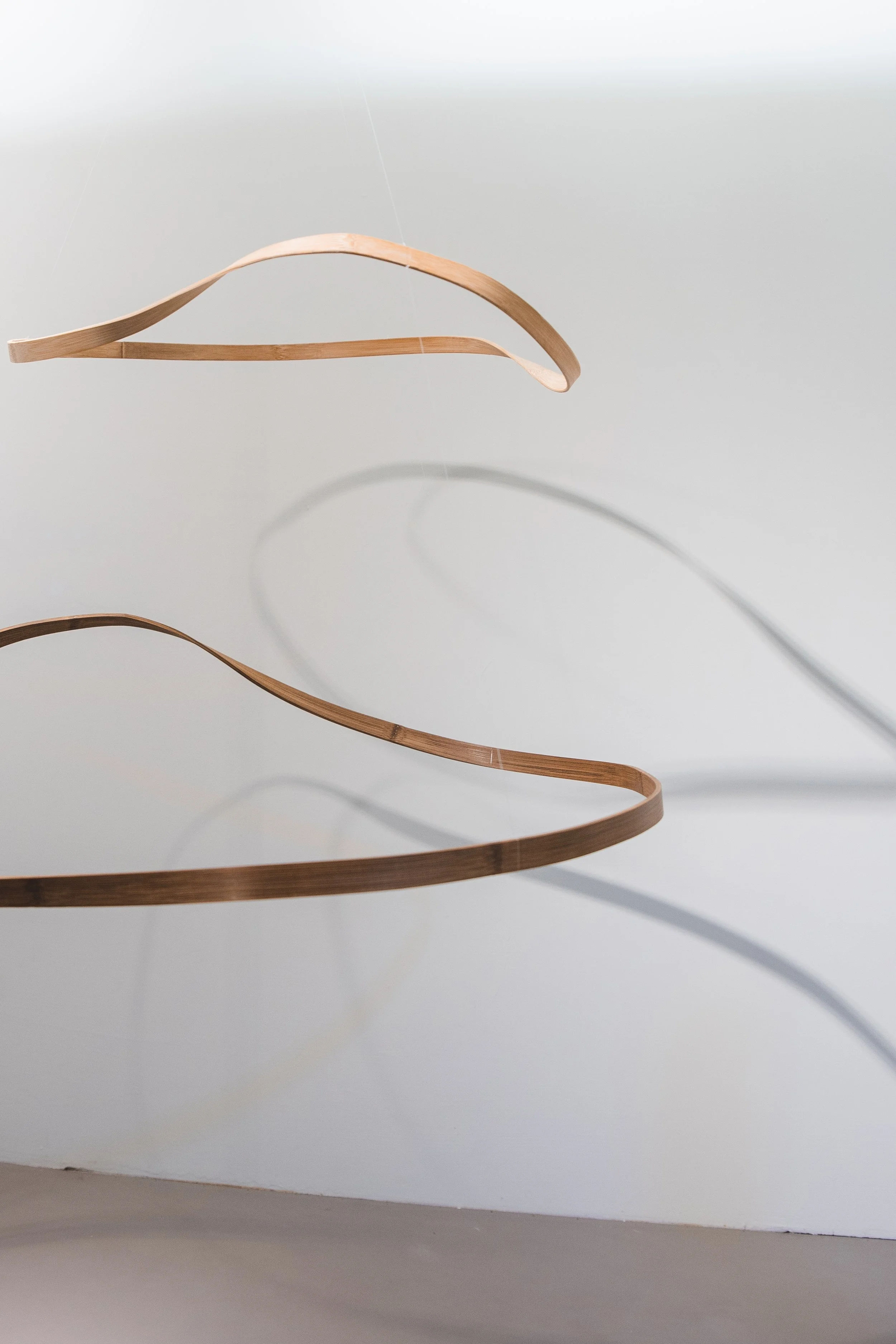Gallery Lightness21
Kai Ping Liu
Taiwanese Artist and Industrial Designer
Bamboo Painting (Blue Port), 2023, and Bamboo Strip 01, images courtesy Kai Ping Liu
“My academic background is in industrial design, and later I began experimenting with art. For me, there is a semi-transparent line between design and art.”
“Before starting a project, I usually decide whether its primary direction is design or art. In product design, functionality is certainly a major consideration. Yet, very often during the design process - especially in stages like material and process testing - I discover many interesting outcomes. These outcomes, which cannot always be transformed into functional products, become a material-expression database that I draw on for my artistic works, to be presented later in suitable projects with my concepts. I think that the creative fusion of design and art is intriguing.”
“‘Lightness’ is a quality I appreciate. In my past works, I did not deliberately strive for it, but my work such as “Bamboo Strips,” “Layers of Bamboo,” and “The Loop of Hydrology Series” naturally embody it. They all use bamboo strips material and intentionally preserve a sense of open, empty space.”
Kai Ping Liu
Designing with the perspectives of industrial design, craft, art and architecture, and reinventing traditions, Kai Ping Liu’s work focusses on materials and social phenomena. After graduating from the Design Institute of National Taiwan University of Science and Technology, he completed an exchange programme at the Politecnico di Milano, and has collaborated with the Industrial Technology Research Institute of Taiwan. In 2021 his residency at Nantou Bamboo Art Museum led to the “Hyper Bamboo” exhibition, and more recently his “The Loop of Hydrology” series has been exhibited in Taiwan. In 2022 he was awarded Best of MOM (Maison & Objet and More) in Paris. Liu also lectures at the University.
Please contact for further details of available works and commissions.
Bamboo Paintings
(Bamboo Strip sculptures below)
“Bamboo dyeing is a traditional technique. Because it is done by hand, there are many variables I can control. I chose to focus on ‘time’, allowing the colours to form natural gradients.”
“I would describe it as a co-creation with bamboo fibre. Through many experiments, I discovered that the fibres of bamboo are fine and unique, almost like fingerprints. I watched as the dye slowly travelled along the fibres, colouring the vascular bundles in random patterns. At that moment, I realised that the process was not created by me alone. And the bamboo fibres themselves played an essential role.”
“Later, in my bamboo painting series, I intentionally gave up 100% control of where the colours would appear, leaving space for the natural randomness of bamboo fibres. I love this process of learning from the material, conversing with it, and interacting until we reach the final result together. When the dye stops flowing through the fibres, they leave behind a sense of ‘frozen stillness.’”
“Some works are single images, while others are multi-panel compositions, in which I take a more abstract approach to express my chosen themes.”
“The bamboo paintings have continued for over three years, resulting in various series: a blue series inspired by Hakka cultural heritage, blue and green works reflecting mountains and oceans, vibrant yellow and pink works created during my residency at the Nantou Bamboo Craft Museum to disrupt the traditional craft context, and assembled blue series inspired by Kaohsiung’s port landscape.” Kai Ping Liu
Bamboo Strip 01, 02, and Layers of Bamboo
“The starting point of this work, ‘Layers of Bamboo’, was my desire to challenge the bending limits of bamboo strips. During the bending process, I experimented with different thicknesses and eventually chose a thin dimension. The combination of bamboo’s natural materiality, its thinness, the curved spatial forms it created, and the shadows cast by the work all conveyed a sense of lightness. The works not only used the flexibility of bent bamboo strips, but also incorporated heat-bending techniques. This method allows for a variety of curved forms and is a common practice in bamboo and woodcraft.” Kai Ping Liu
The Loop of Hydrology
“The pieces [Bamboo Strips and Loop of Hydrology] are suspended with transparent fishing lines. Because they are lightweight, even a slight breeze sets them into motion. When touched by the wind, the sculpture moves in accordance with the expression of its own shape. I enjoy both their static presentation and when they move a little in the air. When moving, ‘Bamboo Strips’ creates a continuous visual effect of bending curves, inviting viewers to experience the work from 360 degrees. ‘The Loop of Hydrology’ Series reflects my residency research on the hydrology of southern Taipei. Beyond presenting bamboo strip forms, I was pleased that the motion of the work could also embody the flow of water.”
“I look forward to presenting these works in different spaces, where they can interact differently with their environments.”
“In my bamboo sculptures, I have sought to embody abstract forms. But I also aim to create an open space for viewing and imagination. I leave room for multiple perspectives and interpretations, hoping that viewers can bring in their own thoughts and emotions.
“I have worked with Makino bamboo (Phyllostachys makinoi) and Moso bamboo (Phyllostachys pubescens), both of which are abundant in Taiwan.”
“I used small marble blocks to anchor and stabilise long bamboo strips. These stones became metaphors for pause buttons or resting points.” Kai Ping Liu
* * *
“It is often in the juxtaposition of lightness and weight - in this case, bamboo and stone - that balance is found that connects to the human experience. Kai Ping’s work is a pragmatic experiment with the tensile strength of bamboo and how it can play with and delineate empty space. It is also a form of visual and spatial poetry.” Clare Farrow
Between - Partition
“This piece was created at my former studio, Essence Design & Craft, in collaboration with my design partner, and with Filipino abaca makers [Manila hemp], and Taiwanese rattan craftsmen. It was truly an international project. When I first designed it, I had not yet visited the Philippines, so only half the concept was developed. Once there, I encountered the abaca material and its unique weaving methods, which broadened my perspective. We developed different abaca fabrics, each preserving a certain level of transparency. Our intention was to divide space while still allowing visibility, creating a sense of functional ambiguity. This also gave the furniture greater flexibility in different spatial contexts.” Kai Ping Liu
This concept can be adapted using other woven materials.
“Natural and tactile, these beautiful woven partitions have a lightness and translucency that still allows for the passage of light and air through an open-plan living or work space, but at the same time - particularly when layered as groups of three - they can provide privacy and subtle divisions that are important to a sense of wellbeing, especially in a small space. The craftsmanship is beautiful, honouring traditional materials and techniques, and giving the partitions individual characters through the material and size variations.” Clare Farrow
Hyper Bamboo
Nantou Bamboo Museum, Taiwan
“In my twenties, I had the opportunity to learn traditional bamboo knowledge and crafts in Nantou, Taiwan - a major centre of the bamboo industry, neighbouring my hometown of Taichung. The environment was filled with traditional bamboo objects and old-style bamboo interiors. Around the same time, I had just returned from a trip to Northern Europe, where I was inspired by minimalism and the energy of bold, youthful colours. So I began experimenting with bringing minimal forms and fresh colour palettes into bamboo objects, hoping to give traditional materials and crafts a contemporary perspective for a new generation.” Kai Ping Liu
“Liu’s experiments with bamboo continue - in jewellery too - and he is also testing the material’s potential when accompanied by metal and stone. He is open to collaborating with international brands and research laboratories, through Gallery Lightness21, in order to further study bamboo and its interaction with other materials, colours and spaces. He is also now designing products, including flower vases, in stainless steel, maximising its reflective lightness when combined with brutalist forms.” Clare Farrow


